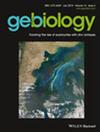Microbial Cycling of Sulfur and Other Redox-Sensitive Elements in Porewaters of San Clemente Basin, California, and Cocos Ridge, Costa Rica
Abstract
The microbial recycling of organic matter in marine sediments depends upon electron acceptors that are utilized based on availability and energetic yield. Since sulfate is the most abundant oxidant once oxygen has been depleted, the sulfide produced after sulfate reduction becomes an important electron donor for autotrophic microbes. The ability of sulfide to be re-oxidized through multiple metabolic pathways and intermediates with variable oxidation states prompts investigation into which species are preferentially utilized and what are the factors that determine the fate of reduced sulfur species. Quantifying these sulfur intermediates in porewaters is a critical first step towards achieving a more complete understanding of the oxidative sulfur cycle, yet this has been accomplished in very few studies, none of which include oligotrophic sedimentary environments in the open ocean. Here we present profiles of porewater sulfur intermediates from sediments underlying oligotrophic regions of the ocean, which encompass about 75% of the ocean's surface and are characterized by low nutrient levels and productivity. Aiming at addressing uncertainties about if and how sulfide produced by the degradation of scarce sedimentary organic matter plays a role in carbon fixation in the sediment, we determine depth profiles of redox-sensitive metals and sulfate isotope compositions and integrate these datasets with 16S rRNA microbial community composition data and solid-phase sulfur concentrations. We did not find significant correlations between sulfur species or trace metals and specific sulfur cycling taxa, which suggests that microorganisms in pelagic and oxic sediments may be generalists utilizing flexible metabolisms to oxidize organic matter through different electron acceptors.

 求助内容:
求助内容: 应助结果提醒方式:
应助结果提醒方式:


